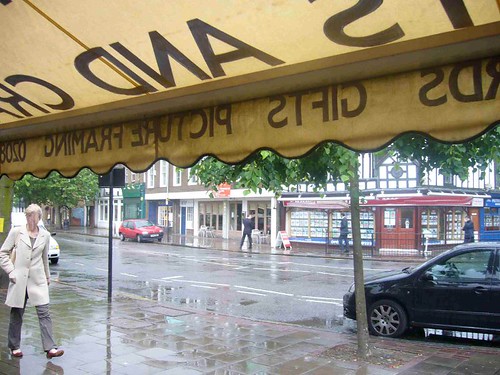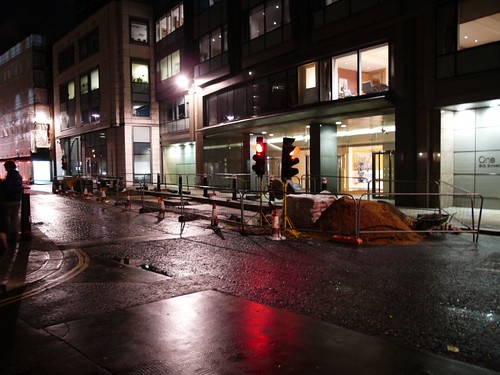We often hear of companies’ websites becoming inaccessible because of denial of service (DoS) attacks.
What would happen if an entire country were to be subjected to a distributed denial of service (DDoS) attack?
This article looks at ways of approaching this subject in an ICT course.
1 Start with what you know
If a whole country DDoS is too difficult a concept to start with, try asking what might happen in the event of a power cut.
2 Consider actual incidences
We do have some evidence to go by, notably the attacks on Estonia back in April 2007, as recorded here.
3 Explore in your classroom
However, rather than only do research of 3rd party documents and websites, why not explore this issue in your classroom?
In many, if not all, sets of standards of educational ICT, there is a section which states that students should understand the effects of information technology on society.
4 The economist's approach
One way of approaching the topic is to ask: what would be the effects of not having information technology all of a sudden? This is the economist’s approach to things. If it’s difficult to work out the cost of something, you could try working out the cost of not having it.
There’s a good example of this concept in the area of road pricing. Suppose you wanted to calculate the cost of maintaining roads that is attributable to heavy goods vehicles. In Britain, lorries (trucks) are not permitted in the outside lane of a motorway. Therefore it is theoretically possible to see if there is a difference between the wear and tear of that lane compared to the others. If there is, the difference is more or less due to the fact that heavy goods vehicles don’t use it.
So how could you start to get your students to think about what a DDoS would mean in terms of what might happen, and what the consequences would be?
5 Make it personal
One approach would be to get them to consider how a personal lack of internet access would affect them. This would make an interesting topic for a class discussion.
6 Set up a survey
You could set up a survey, for example, using the survey function in Google docs. To get to it, register for Google Docs, and select New->Form.
7 Set up a poll
Polls are usually quicker and easier to set up than surveys. An alternative is Zoho’s Poll feature. Again, it’s free but you have to register. If you don’t want to have to register, you could try Pollcode. That lets you post the poll onto a website of your choice, or to use Pollcode’s, as I have done here. If your school allows students to use Twitter, try this poll instead.
Questions you can ask might include how many hours they spend online in a week, and about what they do online. The results may surprise and even shock you (or perhaps they won’t). In a survey I carried out, teenagers said they spent an average of 9 hours a week online (another survey said 12). That’s over one working day if you think about it.
8 What about the school?
Schools are increasingly being encouraged to operate in a way that they would find it extremely hard to function effectively if their network went down. You could ask the students to brainstorm what systems the school uses computers for. Suggestions are likely to include registration, lesson planning and lesson delivery, contact with parents, and finances.
9 Effects on parents?
Students’ parents would also be affected if the school computer systems were inaccessible. For example, how would they be able to access their child’s details, such as their grades and attendance, which is another objective to be met in England.
10 Discuss the effects on the local community
Perhaps a local business could send someone along to talk about the likely effects on business, or...
11 Go on a visit
Arrange a visit to a local supermarket: they are utterly dependent on their computer systems and their data collection and storage.
12 Carry out a survey in the town centre
An interesting exercise might be to carry out a survey in the town centre:
- How do local businesses use information technology? How do local residents make use of it?
- How are they affected by it? They may not think they are, but how does the local council use technology? For example, it may be possible to obtain information, and pay parking fines, online.
- How about recording people’s views with a video camera or voice recorder? (Make sure you obtain permission to publish on the the school’s website, of course.)
See below also.
Out and about
As well as surveys, polls and podcasts, don’t forget that a picture tells a story.
13 Use a photo as a starting point for discussion
Get the students to look at the photo below, and try and identify how many things in it rely heavily on the use of computers and related technology.
With a bit of imagination and common sense, they should be able to come up with quite a few ideas.
14 Use a photo as a starting point for story-telling
The photo below was taken outside the Barbican, in London. It struck me as a good metaphor for all systems being stopped. (For more photos, please look here.)
Use the photo above (or one that the students or you have taken) and weave a story around it.
15 Find a suitable photo...
Alternatively, arm the students with a digital camera each (or let them use their phones) and tell them to spend a lesson looking for and taking a photo which they think conveys what would happen in the event of a cyber attack, or set this for homework.
16 ... And do a presentation to the rest of the class
17 ... Or make a podcast on the subject
How about creating a 'live' news bulletin about it?
18 ... Or shoot a video on the subject
19 ... Or create a Glogster poster on the subject
This is and the photo, video and podcasting suggestions are certainly not mutually exclusive. Indeed, it would make sense to create the Glogster after doing them.
20 Discussion
It would be good to discuss these issues with your students offline as well as online, but there are some great online opportunities.
21 Start a wiki
Wikis are a great way of encouraging discussion and collaboration, and at the time of writing Wikispaces were giving away 250,000 premium ad-free accounts free of charge. See here for details.
22 Start a social networking community
If your school permits social networking, why not set up a free Ning site? You will be able to share photos and videos, and write about issues through the blog feature, and discuss issues through the forum feature.
23 Start a Twitter conversation
Create a Twitter identity for the project, or use your own if you have one, and start a discussion on this subject. Use the hashtag system for keeping track of it. eg end each tweet with #cyberattack.
Conclusion
The key message here is that a topic like “How does technology affect society?” can be treated in an interesting way that engages the students.
An earlier version of this article appeared in the November 2008 issue of the Computers in Classrooms newsletter.


